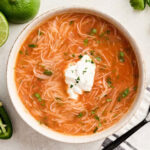Reversing type 2 diabetes through diet is increasingly recognized as a powerful and achievable goal for many individuals. While it’s crucial to consult healthcare professionals for personalized advice, incorporating specific foods into your diet can significantly impact blood sugar levels, insulin sensitivity, and overall metabolic health. Focusing on whole, unprocessed foods is key to managing and potentially reversing this condition.
Non-starchy vegetables are foundational in a diabetes-reversal diet. These low-carbohydrate, nutrient-dense foods, such as spinach, kale, broccoli, and cauliflower, are packed with vitamins, minerals, and fiber. Fiber plays a crucial role in slowing down glucose absorption, preventing blood sugar spikes after meals. Including a variety of non-starchy vegetables at each meal can help improve insulin sensitivity and promote healthy weight management, both vital for reversing type 2 diabetes.
Fruits, often questioned in diabetes management, can be beneficial when chosen wisely and consumed in moderation. Low-glycemic index (GI) fruits like berries, cherries, apples, and pears release sugar slowly into the bloodstream, minimizing blood sugar spikes. Berries, in particular, are rich in antioxidants and fiber, contributing to improved insulin function and reduced inflammation, which are key factors in diabetes reversal.
Legumes, including beans, lentils, and chickpeas, are nutritional powerhouses that can significantly aid in reversing diabetes. They are high in fiber and protein, contributing to satiety and helping regulate blood sugar levels. Studies have shown that incorporating legumes into a low-glycemic index diet can improve glycemic control and reduce cardiovascular risk factors in individuals with type 2 diabetes. Their slow-digesting carbohydrates prevent rapid glucose release, making them an excellent choice for stable blood sugar.
Whole grains, unlike refined grains, retain their bran and germ, providing a wealth of fiber and nutrients. Opting for whole grains such as quinoa, oats, and brown rice over white bread and pasta can positively impact blood sugar control. The fiber in whole grains slows down digestion and glucose absorption, preventing blood sugar spikes and promoting better insulin sensitivity.
Nuts and seeds are excellent sources of healthy fats, fiber, and protein, making them valuable additions to a diabetes-reversal diet. Almonds, walnuts, flaxseeds, and chia seeds can help improve insulin sensitivity and manage blood sugar levels. Their healthy fats contribute to satiety, reducing overeating and supporting weight management. However, moderation is important due to their calorie density.
Fatty fish, rich in omega-3 fatty acids, offer significant benefits for individuals aiming to reverse diabetes. Salmon, mackerel, and sardines are examples of fatty fish that can improve insulin sensitivity and reduce inflammation. Omega-3s have been shown to play a role in improving glucose metabolism and reducing the risk of diabetes-related complications.
While dietary changes are paramount, it’s also important to note that beverages play a role. Water is crucial for hydration and overall health. Unsweetened tea and coffee, in moderation, can also be included, offering potential antioxidant benefits without adding to blood sugar levels. Conversely, sugary drinks should be strictly avoided as they can drastically elevate blood sugar and hinder diabetes reversal efforts.
Incorporating these food groups strategically into your daily meals, alongside lifestyle modifications like regular physical activity, can create a powerful approach to reversing type 2 diabetes. Remember to consult with healthcare professionals and registered dietitians to create a personalized plan that aligns with your individual health needs and goals.


